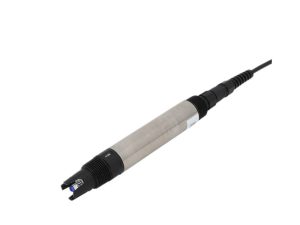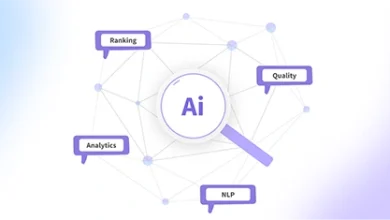Agriculture is a cornerstone of human society, supplying the food, raw materials, and fibers that sustain populations globally. As the world faces the challenges of population growth, climate change, and soil degradation, modern farming techniques are evolving to ensure that agricultural productivity remains high and sustainable. Among the many tools that are transforming agriculture, Digital pH sensor are emerging as crucial instruments in soil management and crop production.
The pH level of soil is one of the most important factors influencing plant health. It determines the availability of nutrients and the activity of soil microorganisms, both of which are essential for plant growth. For this reason, accurate and continuous pH monitoring in soil has become a key practice for maximizing crop yields and ensuring soil health. Digital pH sensors offer a more efficient, reliable, and precise way to manage soil pH compared to traditional methods, which often rely on manual testing and limited data collection.
In this blog, we’ll explore how digital pH sensors are enhancing agricultural practices, increasing crop yield, and contributing to sustainable farming.
What is Soil pH and Why is it Important for Agriculture?
Soil pH is a measure of the acidity or alkalinity of the soil, ranging from 0 to 14. A pH of 7 is considered neutral, values below 7 indicate acidic soils, and values above 7 indicate alkaline soils. The pH level of soil affects various factors that are crucial for plant growth, including:
-
Nutrient Availability: Different nutrients are available to plants at different pH levels. For example, at a pH of 6.0 to 7.0, most essential nutrients like nitrogen, phosphorus, and potassium are readily available to plants. However, in more acidic or alkaline soils, certain nutrients become less available, leading to nutrient deficiencies or imbalances.
-
Microbial Activity: Soil pH affects the diversity and activity of soil microorganisms, including bacteria, fungi, and other organisms that help break down organic matter and release nutrients into the soil. A proper pH level promotes a healthy microbial ecosystem that is essential for soil fertility.
-
Soil Structure: Soil pH can impact the physical properties of soil, including its structure and ability to retain water. In soils that are too acidic or too alkaline, plant roots may struggle to penetrate the soil, reducing water and nutrient uptake.
-
Plant Health: The right pH levels ensure that plants can absorb nutrients efficiently. Plants grown in soils with suboptimal pH levels may suffer from nutrient deficiencies, poor growth, and increased susceptibility to diseases.
Understanding and maintaining the ideal pH for different crops is essential for maximizing yields and ensuring the long-term health of the soil. For example, blueberries thrive in acidic soils with a pH between 4.5 and 5.5, while most vegetables prefer a neutral to slightly acidic pH range (6.0 to 7.0).
The Role of Digital pH Sensors in Agricultural Soil Management
Digital pH sensors have the potential to revolutionize the way farmers manage soil health and crop production. These advanced devices offer several key advantages over traditional soil pH testing methods, which often rely on labor-intensive manual sampling and infrequent measurements.
Here are some of the main ways Digital pH sensor are transforming agricultural practices:
1. Real-Time and Continuous Monitoring
One of the biggest advantages of digital pH sensors is their ability to provide real-time, continuous monitoring of soil pH. Traditional pH testing methods often require collecting soil samples at specific intervals, sending them to a lab, and waiting for results. This can lead to delayed actions and missed opportunities to address pH imbalances.
With digital pH sensors, farmers can continuously monitor soil pH at multiple locations in their fields, providing instant feedback on the condition of the soil. This real-time data allows for quick intervention if the pH deviates from the optimal range. For example, if a soil sample shows that the pH has dropped too low, a farmer can immediately apply lime to raise the pH, preventing potential crop damage.
2. Accurate and Precise Measurements
Digital pH sensors are highly accurate and precise compared to traditional analog pH meters or manual testing methods. The sensors use advanced technology to measure pH levels and convert them into digital readings that can be displayed on a screen or transmitted to a smartphone or tablet. This eliminates the need for interpretation and reduces the possibility of human error.
Furthermore, many digital pH sensors are equipped with automatic temperature compensation (ATC), which adjusts the pH reading based on the temperature of the soil. This ensures that the measurements remain accurate, even when soil temperatures fluctuate, which is a common occurrence in agricultural environments.
3. Automation and Integration with Precision Agriculture Systems
Digital pH sensors can be integrated into precision agriculture systems, which use data from various sensors to optimize farming practices. By integrating pH sensors with other environmental data, such as soil moisture, temperature, and nutrient levels, farmers can create comprehensive profiles of their fields and develop more targeted soil management strategies.
For example, a precision agriculture system can automatically adjust irrigation schedules or apply fertilizers based on real-time pH and moisture data. This not only improves the efficiency of farming practices but also minimizes the use of chemicals, reducing costs and environmental impact.
4. Cost-Effective Long-Term Solution
While digital pH sensors may have a higher initial cost compared to traditional testing kits or pH meters, they offer a cost-effective solution in the long run. By continuously monitoring soil pH and automating data collection, these sensors reduce the need for frequent manual testing and help farmers make more informed decisions about soil amendments. This leads to more efficient use of fertilizers and lime, reducing input costs and improving overall farm profitability.
Additionally, the early detection of pH imbalances can prevent costly crop losses or soil degradation. In this way, digital pH sensors provide a high return on investment (ROI) by helping farmers optimize their resources and protect their crops.
5. Precision in Nutrient Management
Soil pH plays a direct role in nutrient availability. By maintaining the optimal pH for crops, digital pH sensors enable precision in nutrient management. For example, if the pH is too low (acidic), certain nutrients like phosphorus, calcium, and magnesium become less available to plants. On the other hand, if the pH is too high (alkaline), micronutrients like iron and zinc may become deficient.
With accurate, real-time pH data, farmers can make adjustments to their fertilization practices to ensure that crops have access to the nutrients they need. This can help improve crop yields, reduce nutrient wastage, and minimize environmental pollution from excess fertilizers.
6. Sustainability and Environmental Impact
Maintaining proper soil pH is not just beneficial for crop yield—it’s also important for sustainable farming practices. In soils that are too acidic or alkaline, the soil ecosystem can be damaged, and valuable topsoil can be lost. Additionally, the overuse of fertilizers and lime to correct pH imbalances can lead to nutrient runoff and water pollution.
By using digital pH sensors to monitor soil pH and make timely interventions, farmers can reduce the need for excessive chemical inputs. This helps to protect soil health, prevent water contamination, and promote sustainable farming practices.
7. Versatility for Different Crops and Soil Types
Every crop has its own ideal pH range, and soil pH can vary significantly across a field. Digital pH sensors provide the flexibility to monitor different soil types and tailor interventions based on the specific needs of each crop. Whether it’s for row crops, orchards, vineyards, or even greenhouse vegetables, digital pH sensors can help farmers ensure that their soil is within the optimal pH range for the best possible crop performance.
The Future of Digital pH Sensors in Agriculture
The future of digital pH sensors in agriculture is bright, as technology continues to evolve. Upcoming advancements may include:
-
Smaller, more portable sensors: New sensor designs will allow farmers to use compact, handheld devices for quick soil pH testing in the field.
-
Better connectivity: Digital pH sensors will be further integrated with IoT and cloud-based systems, enabling farmers to monitor soil conditions remotely and receive automated alerts when pH levels deviate from the ideal range.
-
Integration with other environmental sensors: The future may see digital pH sensors working in tandem with sensors that measure soil moisture, temperature, and nutrient levels to provide a comprehensive overview of soil health and crop requirements.
Conclusion
Digital pH sensors are transforming agriculture by providing farmers with accurate, real-time data that helps optimize soil management practices. By offering precise monitoring of soil pH, these sensors enable farmers to improve crop yields, reduce costs, and promote sustainable farming practices. As technology continues to advance, digital pH sensors will play an increasingly important role in ensuring that our food systems remain productive, efficient, and environmentally friendly.
For farmers looking to maximize crop health, minimize environmental impact, and stay competitive in a rapidly changing agricultural landscape, digital pH sensors are an indispensable tool for the future of farming.




